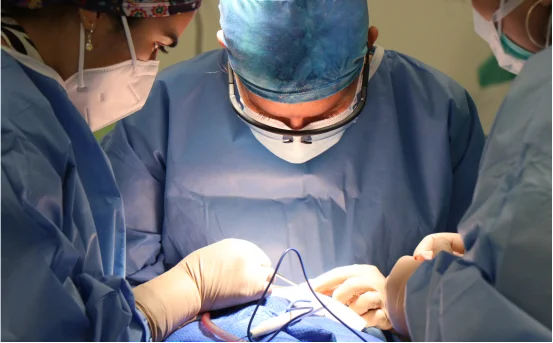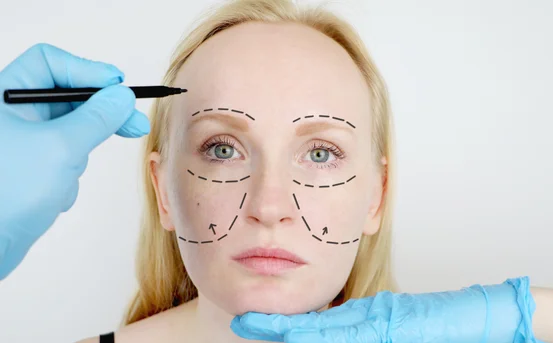Microvascular surgery is a cutting-edge surgical technique that has revolutionized modern reconstructive procedures. It involves the use of an operating microscope, ultrafine surgical instruments, and meticulous suturing skills to manipulate blood vessels and nerves that are often just 1–3 millimeters wide. This level of precision allows surgeons to reconnect tissues, restore blood supply, and repair function in areas affected by trauma, cancer resection, or congenital defects.
Microvascular techniques are especially vital in reconstructive plastic surgery, limb salvage, head and neck surgery, and cancer-related reconstructions. These procedures not only restore physical appearance but also significantly improve function, sensation, and overall quality of life. The most commonly performed microvascular surgery procedures and their clinical significance.
Microvascular Surgery Procedures
- Free Flap Reconstruction
Free flap surgery is one of the hallmark procedures of microvascular surgery. In this technique, tissue (called a “flap”) comprising skin, fat, muscle, or bone is completely detached from one part of the body and transplanted to another. Once the flap is repositioned, the surgeon reconnects its arteries and veins to blood vessels at the recipient site using microsurgical tools and techniques.
Common Uses:
- Breast reconstruction after mastectomy (e.g., DIEP flap, TRAM flap)
- Jaw and facial reconstruction after tumor removal or accidents
- Limb reconstruction following trauma, infection, or tumor excision
This approach preserves natural tissue, avoids implants or prosthetics, and provides long-lasting functional and cosmetic outcomes.
- Breast reconstruction after mastectomy (e.g., DIEP flap, TRAM flap)
- Replantation Surgery
Replantation refers to the reattachment of a completely severed body part such as a finger, hand, arm, or even parts of the face. Microvascular surgery plays a life-saving role here by allowing surgeons to reconnect the tiny blood vessels and nerves critical for the survival and functionality of the amputated part.
Why it matters:
- Offers restoration of form and function
- Preserves fine motor skills, especially for finger or hand injuries
- Can reduce long-term disability and the need for prosthetics
Successful replantation requires prompt surgery, precise microsurgical technique, and diligent rehabilitation.
- Offers restoration of form and function
- Peripheral Nerve Repair and Grafting
In cases of traumatic nerve damage or surgical nerve injuries, microvascular surgeons often perform nerve repair or nerve grafting. This helps re-establish electrical signal conduction and aids in the return of motor function and sensation.
Where it’s commonly used:
- Brachial plexus injuries (common in newborns or severe accidents)
- Facial nerve reconstruction after tumor removal
- Sciatic, median, or radial nerve repairs following trauma
This branch of surgery is not just cosmetic; it restores the ability to move, feel, and express emotions in many cases.
- Brachial plexus injuries (common in newborns or severe accidents)
- Lymphedema Surgery (Lymphaticovenular Bypass)
Chronic lymphedema, often a side effect of cancer treatments like lymph node removal or radiation, causes painful fluid buildup and swelling, usually in the arms or legs. Using microsurgical techniques, surgeons can create new drainage pathways by connecting lymphatic vessels directly to tiny veins, a procedure known as lymphaticovenular anastomosis (LVA).
Clinical benefits:
- Decreases chronic swelling and fluid retention
- Improves mobility, comfort, and quality of life
- Reduces dependence on compression garments and physical therapy
It’s a minimally invasive option with long-term benefits for selected patients.
- Decreases chronic swelling and fluid retention
- Composite Tissue Allotransplantation
One of the most advanced applications of microvascular surgery, composite tissue allotransplantation (CTA) involves the transplantation of complex tissue units like a face, hand, or limb from a donor. These procedures are life-enhancing for individuals with devastating injuries or congenital absence of limbs or facial structures.
Key considerations:
- Requires lifelong immunosuppressive therapy
- Demands highly skilled surgical and post-operative teams
- Has enabled successful full face and double hand transplants globally
CTA exemplifies the extreme precision and transformative potential of microsurgery.
- Requires lifelong immunosuppressive therapy
- Bone and Soft Tissue Reconstruction
When patients suffer from significant bone or soft tissue loss due to trauma, infection, or cancer, microvascular surgery allows the transfer of vascularized bone or muscle tissue from donor sites to reconstruct the damaged area. Surgeons often use the fibula, scapula, or iliac crest to recreate jaw bones, limbs, or structural defects.
Examples:
- Mandibular reconstruction using a fibula flap
- Tibial or femoral bone reconstruction following tumor excision
- Skull or facial bone replacement using vascularized bone grafts
These techniques ensure the transferred tissue receives adequate blood supply, ensuring better healing and long-term durability.
- Mandibular reconstruction using a fibula flap
- Skin and Soft Tissue Flap Transfers for Complex Wounds
Patients with severe wounds, especially those caused by radiation, diabetes, pressure sores, or trauma often require complex tissue coverage. Microvascular flap transfer provides not just skin coverage but also muscle or fat that supports wound healing.
Used in:
- Pressure ulcer management
- Post-burn contracture release
- Wound coverage after cancer excision or orthopedic surgery
The goal is functional restoration, pain reduction, and cosmetic improvement.
- Pressure ulcer management
Conclusion
Microvascular surgery represents the pinnacle of precision medicine in the surgical world. These procedures go far beyond just “closing a wound”. They restore life, limb, and dignity. Whether it’s rebuilding a face after cancer, saving a severed finger, or improving lymphedema symptoms, microvascular techniques make it possible to repair what was once considered irreparable.
As technology and surgical skills advance, more patients are gaining access to these life-changing procedures. If you or a loved one is exploring options for reconstructive or functional surgery, consult with a certified microvascular surgeon. Platforms like MediSuggest can help you connect with top-tier hospitals, verified specialists, and trusted treatment centers for your condition.























